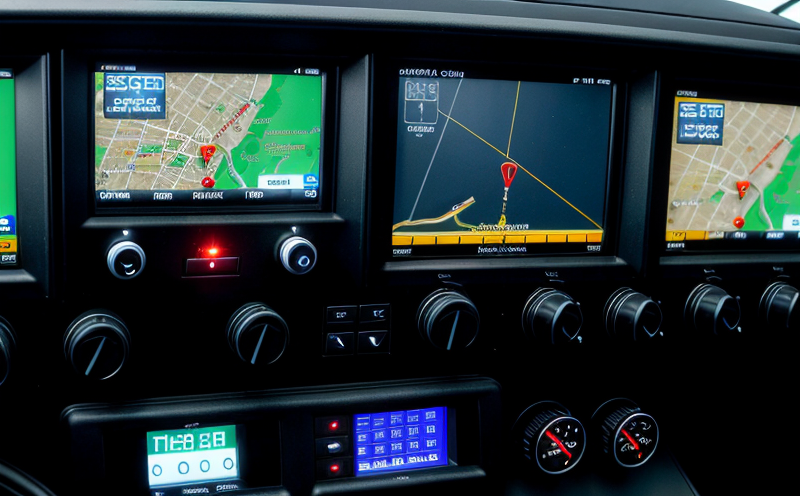IEC 60068-2-30 Humidity Testing of Signal Systems
The IEC 60068-2-30 standard is a crucial document for the testing and certification of navigation lighting and signal systems used in marine environments. This service focuses on ensuring that these critical components meet stringent environmental exposure requirements, particularly with respect to humidity. Compliance with this standard ensures product reliability and safety under harsh maritime conditions.
The primary purpose of IEC 60068-2-30 is to provide a standardized method for simulating the effects of humidity on electronic equipment used in marine applications. This includes signal systems that are subject to prolonged exposure to salt-laden air, moisture, and other environmental factors. By adhering to this standard, manufacturers can ensure that their products perform reliably under conditions similar to those experienced by ships at sea.
The testing process involves exposing the signal system to controlled humidity levels over a specified duration. The test aims to evaluate how well the equipment withstands exposure to high humidity environments without compromising functionality or integrity. This is essential because in marine settings, prolonged exposure to moisture can lead to corrosion and degradation of electrical components, which could ultimately fail during critical moments such as navigation.
The IEC 60068-2-30 test protocol specifies the exact conditions under which signal systems should be subjected to humidity. These include temperature ranges and relative humidity levels that simulate real-world maritime environments. The duration of exposure is also carefully defined, ensuring thorough evaluation of the equipment's durability.
The testing process begins with rigorous preparation of the specimen. Engineers must ensure that all components are in optimal condition before being placed into the test chamber. This includes cleaning and conditioning the specimens to remove any potential contaminants or residues that could affect test results. Once prepared, the signal systems undergo exposure to controlled humidity levels for a prescribed period.
After completing the required time under humid conditions, engineers conduct thorough inspections of each tested specimen. Key checks include evaluating physical integrity, checking connections and interfaces, assessing functionality through performance testing, and verifying that no damage has been done due to moisture ingress. If any issues are identified during inspection or subsequent tests, additional measures may be necessary before retesting.
The results from the IEC 60068-2-30 testing serve as strong evidence of a product's ability to withstand harsh marine environments. This not only enhances trust among customers but also contributes significantly towards meeting regulatory requirements set forth by maritime organizations worldwide. By ensuring compliance with this standard, manufacturers can gain a competitive edge in the global market while maintaining high standards of quality and reliability.
Compliance with IEC 60068-2-30 is particularly important for those involved in the design, development, and production of navigation lighting and signal systems. It provides clear guidelines on how to conduct tests effectively, ensuring accurate assessment of a product's performance under specified environmental conditions.
For quality managers, compliance officers, R&D engineers, and procurement teams working within this sector, understanding and adhering to the requirements outlined in IEC 60068-2-30 is essential. This standard plays a vital role in maintaining the integrity of marine equipment used across various industries such as shipping, offshore oil & gas, and defense.
Applied Standards
| Standard Number | Description |
|---|---|
| IEC 60068-2-30 | Environmental testing - Part 2: Tests on electrical and electronic equipment - Test No. 30: Humidity (constant humidity) |
The IEC 60068-2-30 standard is widely recognized as one of the key documents for environmental stress testing, especially in relation to marine applications. It provides detailed procedures and specifications for simulating the effects of constant humidity on electrical and electronic equipment.
By following these guidelines, manufacturers can ensure that their products are capable of withstanding the challenging conditions encountered in maritime environments. This standard is particularly relevant given its focus on ensuring reliability and safety through rigorous testing methods designed specifically for marine applications.
Environmental and Sustainability Contributions
- Promotes reliable performance under harsh environmental conditions, enhancing overall maritime safety.
- Reduces the risk of equipment failure during critical operations at sea.
- Contributes to longer operational lifespans for marine equipment, reducing waste and resource consumption.
- Supports sustainable practices by ensuring that products are robust enough not to be rendered obsolete prematurely due to environmental factors.
The adherence to IEC 60068-2-30 not only benefits the manufacturers directly but also contributes positively to broader environmental sustainability goals. By promoting reliable performance and longevity, this standard helps reduce unnecessary replacements and waste, ultimately supporting more sustainable practices within the industry.
Use Cases and Application Examples
- Navigation lights installed on commercial vessels must comply with IEC 60068-2-30 to ensure they function correctly even after extended exposure to salt-laden air and moisture.
- Signal systems used in offshore oil drilling platforms need to meet these standards for reliability during critical operations.
- Military-grade communication equipment deployed on naval vessels must undergo this type of testing before deployment to guarantee uninterrupted service under challenging environmental conditions.
The IEC 60068-2-30 standard plays a pivotal role in ensuring the robustness and reliability of navigation lighting and signal systems used across various sectors. Its application extends beyond mere compliance; it fosters innovation by pushing manufacturers to develop products that can withstand extreme environmental conditions, thereby enhancing maritime safety and efficiency.





